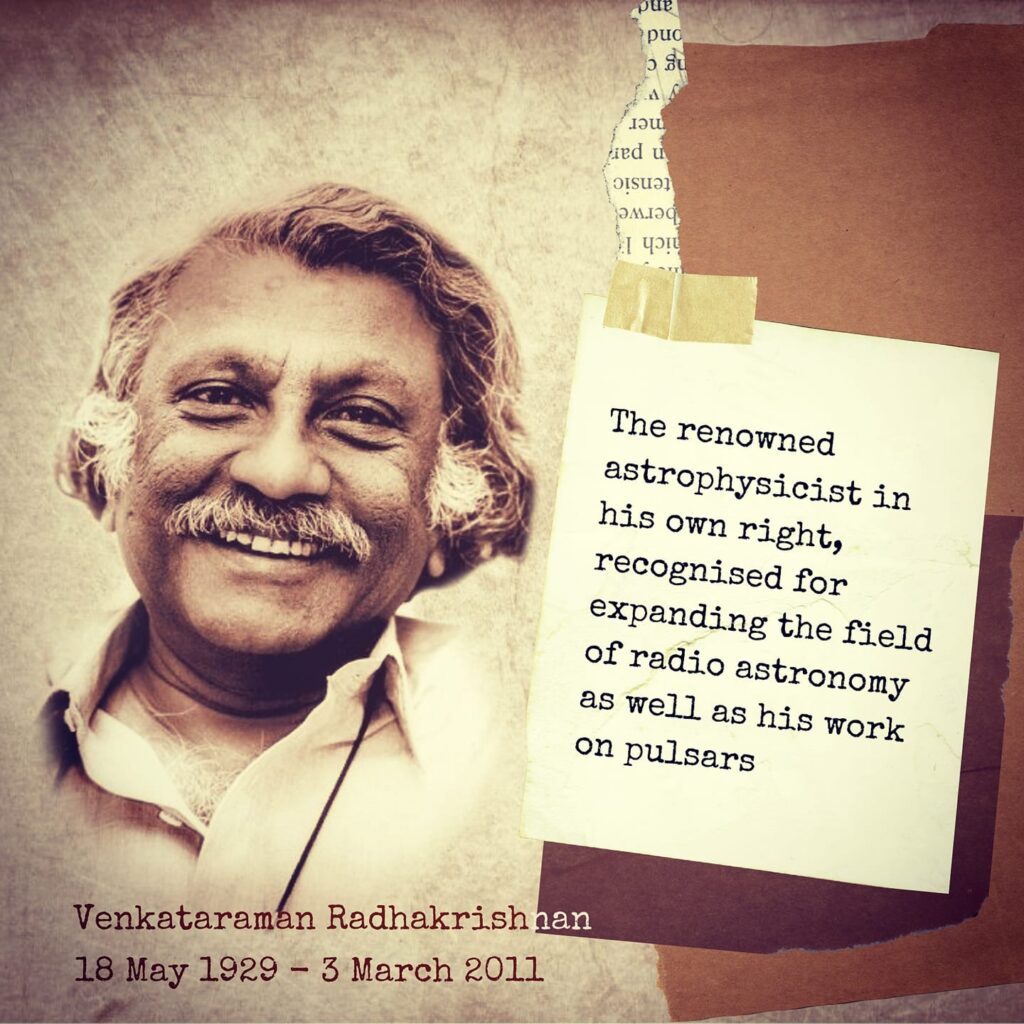
- By Shubhamay Das, IISER Kolkata (18 May 2021)
Venkataraman Radhakrishnan (18 May 1929 – 3 March 2011) was a space scientist and member of the Royal Swedish Academy of Sciences. Known widely as ‘Rad’, Radhakrishnan was the son of Nobel laureate C.V. Raman and cousin of Nobel laureate Subrahmanyan Chandrasekhar. He was also a renowned astrophysicist in his own right and also renowned for his design and fabrication of ultralight aircraft and sailboats, recognised for expanding the field of radio astronomy as well as his work on pulsars.
Radhakrishnan was one of the most respected radio astronomers in the world during his time, in that he was associated in one capacity or other with the world’s biggest radio telescopes. He was a member of the Foreign Advisory Committee for the Netherlands Foundation for Radio Astronomy, Steering Committee of the Australia Telescope National Facility, CSIRO, Australia, Advisory Committee for the Green Bank Radio Telescope, National Radio Astronomy Observatory, USA. He was also a Member of the Governing Council of the Physical Research Laboratory, Ahmedabad and the Scientific Advisory Committee of the Inter-University Centre for Astronomy and Astrophysics. During the period of 1973–1981, he was a member of the Indian National Committee for Astronomy.
Radhakrishnan graduated from Mysore University with a BSc in physics and later Amsterdam University conferred an honorary doctorate on him in 1996. He served as a research scholar in IISC Bangalore. In 1955, aged 26, Rad took up a research assistant’s position at Chalmers Institute of Technology in Sweden, where he focussed on the observation and measurement of neutral hydrogen in interstellar space. Next, he served as a senior research fellow at Caltech. At Caltech, he worked on the Owens Valley Radio Observatory, focusing on the polarisation of radio waves and radio interferometry. He and his team were the first to calculate the magnetic field of Jupiter, caused by the rotation of its interior, from the radio signals emitted by the planet. He also worked on understanding atomic hydrogen in the Milky Way. Then he moved to the CSIRO Division of Radio Physics in Sydney, Australia. At the Parkes Observatory, he was involved in a nascent but big project that studied hydrogen in the universe to understand the interstellar medium. Rad and his collaborators also studied a pulsar called Vela. In the late 1960s, pulsars had just been discovered and Rad’s work contributed to establishing that they were magnetically charged, thus leading to a better understanding of neutron stars. He carried out detailed surveys on the intergalactic space map, besides studying a huge variety of pulsars. His comprehensive work made him one of the world’s leading experts on pulsars who established a solid foundation for their study.
He ended his career as professor emeritus of the Raman Research Institute in Bangalore, India, of which he had previously been director from 1972 to 1994. During his tenure as the director of the Raman Research Institute between 1972–1994, he built up an international reputation for work in the areas of pulsar astronomy, liquid crystals and other areas of frontline research in Astronomy.